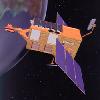Once the raw data have been installed, you can run the standard analysis. The standard analysis proceeds as follows:
- A standard directory structure is created using self-explanatory names.
- The filter-file, containing information about the observation, such as, e.g., the pointing direction, the height of the source above the Earth's limb, and information on the strength of the background (the Electron ratio) is produced.
- All different PCU combinations during a given observation are identified
- For each of these PCU combinations a PCA spectrum and a PCA lightcurve with 16s time resolution are extracted.
#!/bin/bash
pcaex=${XTETOOLS}/pcaextract
obspath=/data5/phsdak/tuebingen/xtearray/FD/AO4/P40068
${pcaex} 40068-01-01-00 ${obspath} 00 -top
${pcaex} 40068-01-01-01 ${obspath} 01 -top
Modify the script to reflect the parameters of your observation, save
it, make it executable,
chmod ugo+x ./allexand execute it:
./allexThe extraction will produce two directories, named 00 and 01, which contain the extracted data. Spectra, response matrices, and modeled background spectra are contained in directories starting with standard2f. The name of the directory also contains information about the proportional counter unit (PCU) combination that was switched off, and information on whether the extraction was done for the top-layer of the PCA only (this was done in the above example, as indicated by the -top argument).
The above call to the pcaextract-script is o.k. in most cases. Sometimes, however, further arguments are required. The most important arguments are:
- -saa=number
- Time in minutes to wait after a passage of the South Atlantic Anomaly. The default, 30, is very conservative and waits until the short-term radioactivity produced in the detectors during the SAA-passage has decayed away. With newer PCA background models, a shorter time period, such as 10 minutes, is often enough.
- -electron=number
- Threshold value of the "electron ratio", a measure for the particle background. Above this number, the background is considered too strong and no data are taken. The default value is rather small and often a larger value is required. This is especially true for soft sources (e.g., Cyg X-1 in the soft state), where the source photons themselves contribute to the electron ratio. In general, do a first extraction using the default value and then plot the electron ratio as a function of time. Times of increased electron ratio can usually be easily identified and the value of the electron ratio can be adjusted accordingly. Then delete the first extraction and reextract using the value for the electron ratio that you just found.
pcaextractwithout any additional command line parameters.
The best way to obtain an overview on the behaviour of a source during the extracted observations is to use the IDL routine rxtescreen. The following program reads the data extracted with allex above and generates postscript-files containing plots of the source count rate, the electron ratio, and the good time intervals during the observation for both, all extracted data and the individual pointings. Save the script below as the file screen.pro, execute the program under IDL (i.e., launch IDL by typing idl and then run it with .run screen), and take a look at the postscript files.
dirs=['00','01']
electron=[0.10,0.10]
path='.'
rxtescreen,path=path,dirs=dirs, $
/exclusive, /top,electron=electron, $
psfile='screen.ps',/noback
FOR i=0,n_elements(dirs)-1 DO BEGIN
rxtescreen,path=path,dirs=dirs[i], $
/exclusive, /top,electron=electron[i], $
psfile=dirs[i]+'_screen.ps',/noback
ENDFOR
END
In later analyses you might want to look at the screening plots and
take the background subtraction into account. In order to do so, omit
the /noback in the above calls to rxtescreen.

